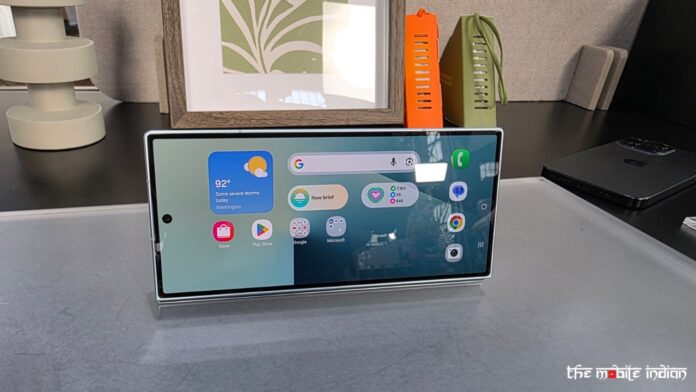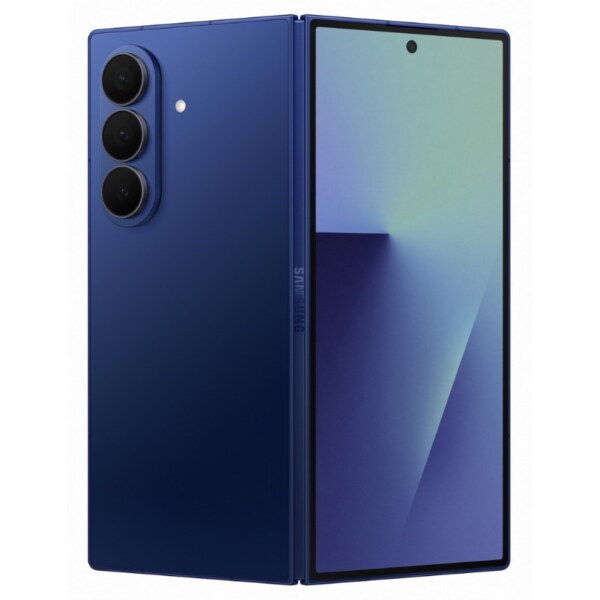Samsung’s Galaxy Z Fold 7 marks the brand’s most polished attempt yet at a truly usable foldable phone. Now in its seventh generation, the Fold 7 trims the fat—literally—with a lighter, thinner body and smarter refinements across the board. It blends cutting-edge folding tech with real-world practicality, finally pushing foldables closer to the mainstream spotlight.
Design: Sleek, Slim, and Surprisingly Practical
Samsung has put the Galaxy Z Fold 7 on a serious diet. When folded, it’s just 8.9mm thick—getting pretty close to traditional slab phones if you discount the camera bump. Unfold it, and it’s only 4.2mm thin, making it the slimmest foldable Samsung has ever produced—and one of the slimmest on the market, period.
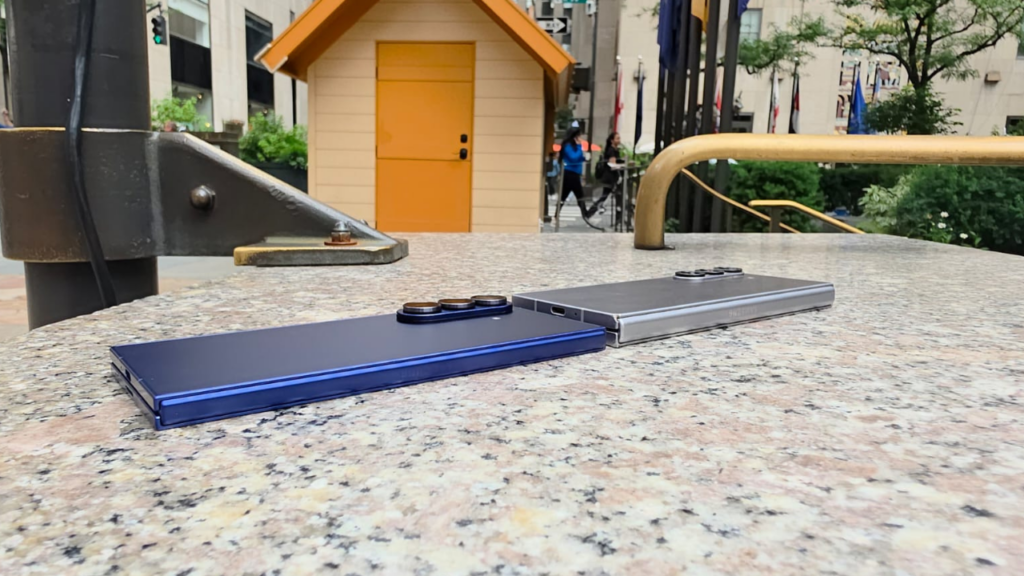
The weight loss is noticeable too. At 215g, it’s 24g lighter than the Fold 6, which doesn’t sound like much on paper but makes a big difference in-hand. For the first time, the Fold feels truly pocketable and doesn’t feel awkward when used one-handed while closed. Typing, scrolling, or making a call? It finally feels natural.
Build quality is as solid as ever. The hinge feels durable, the frame feels premium, and when opened, the device is only slightly thicker than a USB-C port—an impressive engineering feat. However, some old quirks remain. Lay the phone flat with the camera facing down and you’ll notice a bit of wobble, just like previous models.
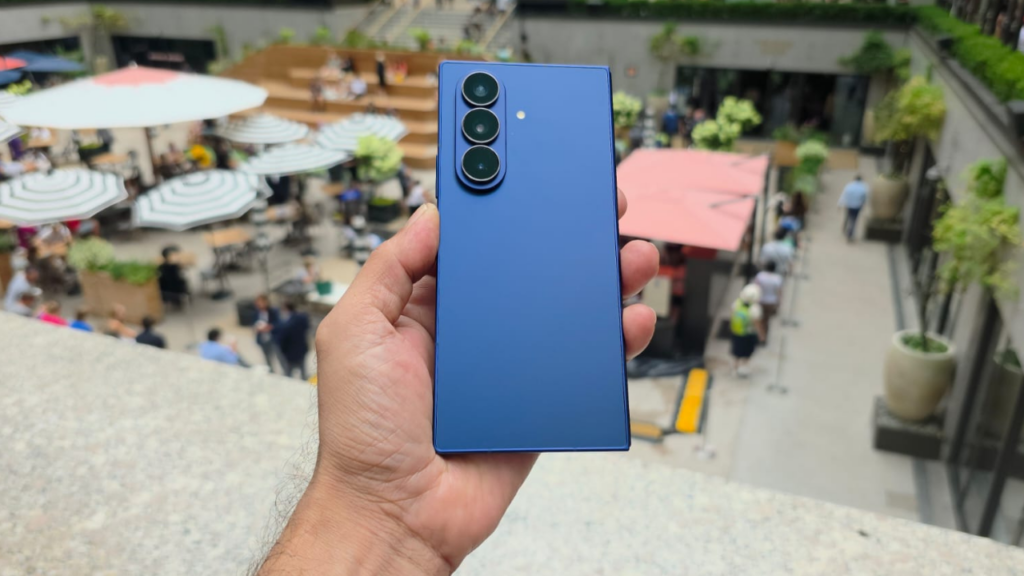
A notable omission this time is S Pen support. To make the Fold 7 thinner, Samsung removed the digitizer layer needed for stylus input. It’s a trade-off that some power users may not appreciate, especially those who relied on the Fold as a tablet for sketching or note-taking. Well, personally, while taking notes, I rely more on a voice recorder rather than pen and paper nowadays.
Display: Beautiful, Bright and Almost Crease-Free
Displays have always been a highlight of the Fold series, and the Fold 7 is no different. The 6.5-inch outer AMOLED Display is vivid, sharp, and buttery smooth thanks to a 120Hz refresh rate. It’s great for daily tasks and casual browsing without needing to unfold the phone.
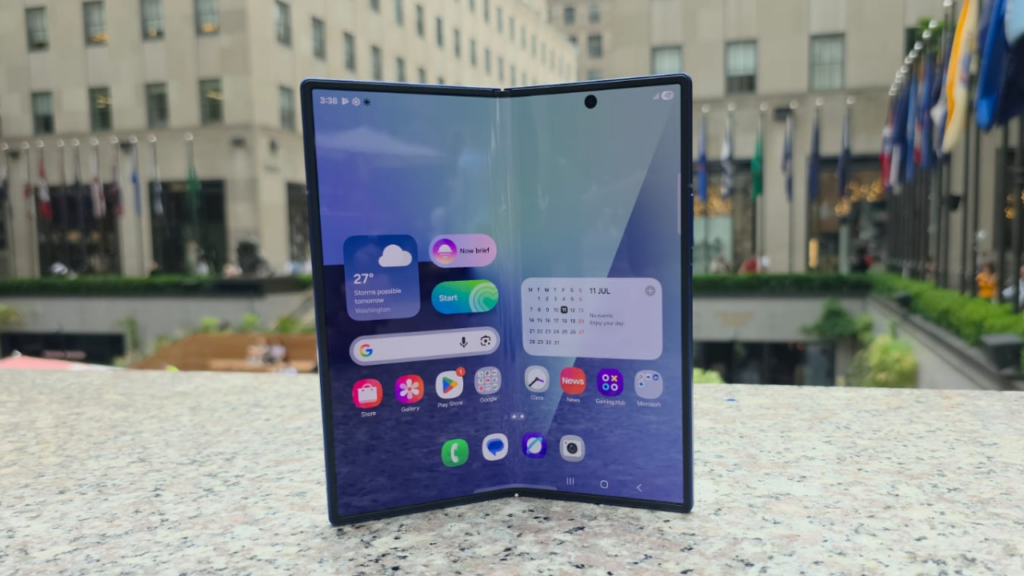
Open it up, and you’re greeted by a stunning 8-inch OLED display—perfect for multitasking, watching content, or even editing on the go. The almost square aspect ratio makes side-by-side App usage a joy. And even the audio quality will not disappoint you.
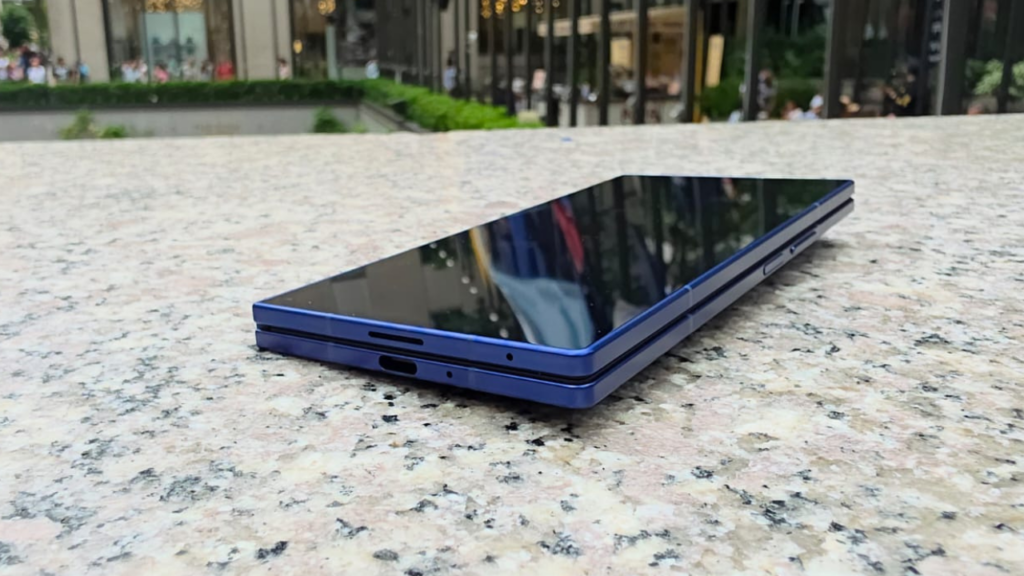
Samsung’s also made strides in reducing the infamous crease. It’s still there, but you’ll barely notice it unless you’re looking under direct light. The fingerprint sensor, built into the power button, is faster and more accurate than ever.
One slight misstep: the outer screen has a rather chunky bezel. It doesn’t affect usability, but visually, it’s a bit of a step back from the otherwise sleek design. Maybe on the lighter side, it is like “nazar na lage the tika” (May no evil eye be upon you).
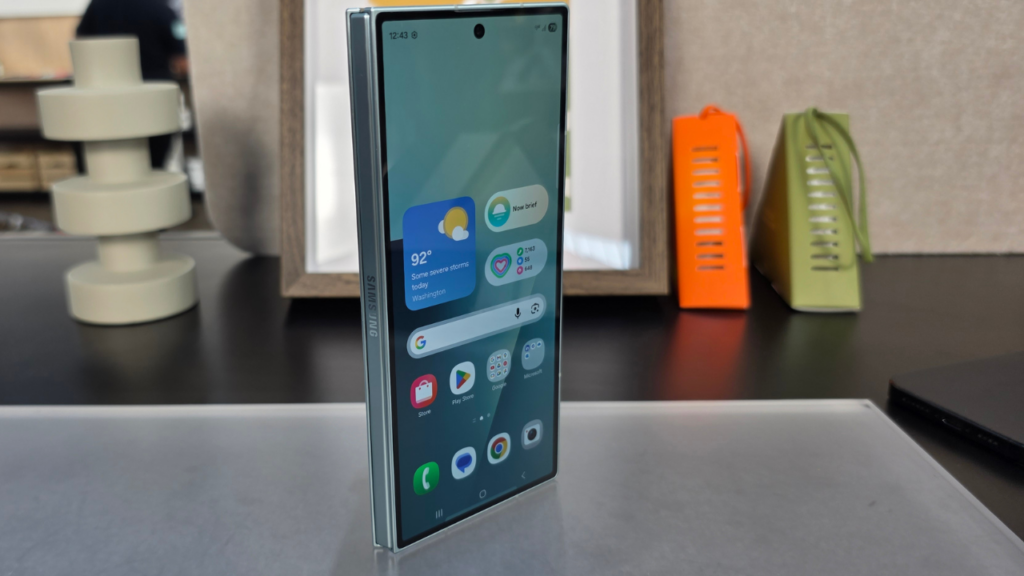
Performance and Software: Fast, Fluid, Familiar
Under the hood, the Z Fold 7 runs on the Snapdragon 8 Elite for Galaxy chip, and it’s every bit the powerhouse you’d expect. Apps launch in a snap, multitasking is effortless and animations feel fluid and smooth throughout.
Even under heavy load—like gaming or editing videos—the phone stays impressively cool. Samsung seems to have nailed the thermal performance this time.
Software-wise, however, things feel a bit too familiar. Most new features are slight upgrades or carryovers from the Galaxy S25 series. Tools like smart image editing and drag-and-drop between apps are useful, especially with the big screen real estate, but they don’t feel particularly groundbreaking.
Well, there is one interesting addition as well – Samsung’s Secure Folder. It is a protected, encrypted space on your device where you can safely store apps, photos, files, and other data, completely separate from the rest of your phone. It’s locked behind a PIN, password, pattern, or biometric authentication, acting like a private “second phone” to keep your sensitive information secure and out of sight.
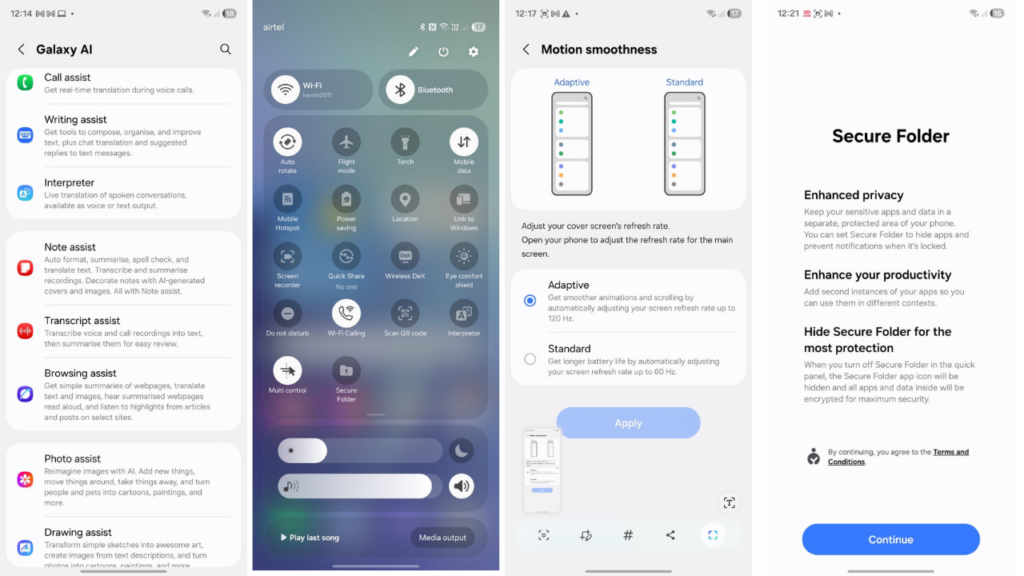
That said, One UI remains one of the best Android experiences out there, especially for foldables. Everything just works, and the user experience remains intuitive and fluid.
If we talk about the call quality, it is loud and crisp. And if the cellular network is playing hide and seek with you, WiFi calling will be handy.
Camera: No More Compromises
At long last, Samsung has brought its foldable camera setup up to flagship standards. The Fold 7’s 200MP main sensor captures sharp, vibrant images with strong dynamic range, even in tough lighting.

Backing it up is a 12MP ultra-wide lens and a 10MP 3x telephoto. The ultra-wide does a solid job with landscapes and close-up detail, while the telephoto lens is decent for portraits, though it doesn’t quite reach the clarity of phones with 5x zoom lenses.

Selfie duties are handled by a pair of 10MP front-facing cameras—one on each screen. But if you want the best results, using the main rear cameras with the outer screen as a viewfinder is still the way to go.


The camera app is well-designed and packed with features. From photo modes to video tools, there’s something here for all levels of users.

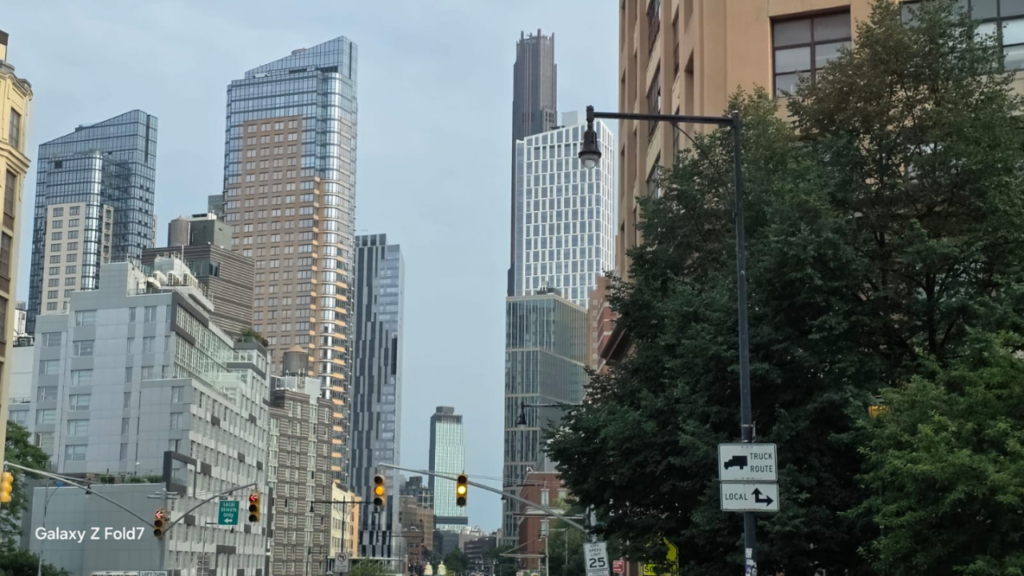
Battery: Still Playing Catch-Up
Battery life is one area where the Fold 7 hasn’t moved forward. With the same 4,400mAh battery as last year’s model, runtime is just okay. Most users will get through a full day with around 6.5 hours of screen-on time, ending the day with about 40% left under moderate use.
If you’re pushing it hard—say, with gaming or heavy editing—you’ll see the battery drop faster. And unfortunately, Samsung’s charging speeds continue to lag behind the competition. In an era of super-fast charging, the Fold 7 still takes its sweet time.
Power users might find the battery to be a bit of a bottleneck, especially considering the phone’s productivity potential.


